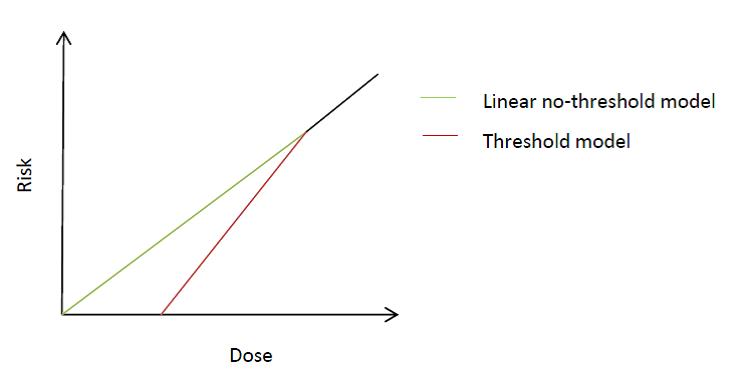Hold Fast to Linear No-Threshold for Radiation Protection
Published by the Natural Resources Defense Fund
Linear no-threshold (LNT) is a model used in radiation protection to estimate the cancer risk caused by ionizing radiation. The LNT model assumes that radiation doses greater than zero will increase the risk of excess cancer or heritable disease in a simple proportionate manner in the low-dose range. In other words, according to the LNT model, even very small doses of radiation can still cause cancer or genetic damage. The LNT model is based on extensive studies of Japanese Atomic-bomb survivors, patients exposed for medical-therapy, nuclear power plant workers, and others. The LNT model has been repeatedly endorsed by scientific bodies like the National Academy of Sciences, the National Council on Radiation Protection and Measurements , and the International Commission on Radiological Protection.
I recently took part in a readers’ forum of Physics Today, a monthly magazine published by the American Institute of Physics. I was responding to an article written by Jeffrey Siegel, Charles Pennington, and Bill Sacks. Their article questioned the validity of the LNT model and supported a threshold model based on fruit-fly data collected 70 years ago. These authors have neglected the studies that showed the validity of the LNT model.
The diagram below shows the difference between the LNT model and an alternative threshold model. The threshold model suggests that below certain exposure levels, there is no observable risk of cancer from radiation. Adoption of the threshold model has an implication of relaxing the current radiation protection standards.

Models for the Health Risks from Exposure to Ionizing Radiation
I responded to correct the inaccuracy by quoting the 2006 report Health Risks from Exposure to Low Levels of Ionizing Radiation: BEIR VII Phase 2, a 20-year study that followed 110,645 Chernobyl cleanup workers, and a cohort study of 308,297 workers in the nuclear industry which all showed a simple proportionate relationship between radiation dose and cancer risk.
Recently a petition was made to the Nuclear Regulatory Commission (NRC) to amend its “Standards for Protection Against Radiation.” Petitioners requested the NRC to remove LNT from the agency’s regulatory framework. NRDC submitted a comment opposing the petition. Not only NRDC, but even the Environmental Protection Agency itself, commenting on the petition , said: “[o]ver the last half century, numerous authoritative national and international bodies have convened committees of experts to examine the issue of LNT as a tool for radiation regulation and risk assessment … Again and again, these bodies have endorsed LNT as a reasonable approach to regulating exposures to low dose radiation.”
Opponents of the LNT model simply chose to disregard core research and findings in the field of radiation health physics. The LNT model is based on sound science, and it adequately protects people. It is better to acknowledge that the science at present is consistent with the LNT model.
Read the full article at: https://www.nrdc.org/experts/bemnet-alemayehu/hold-fast-linear-no-threshold-radiation-protection



